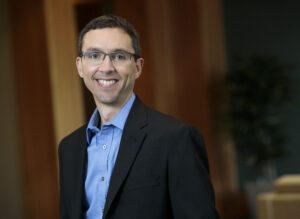Global modeling of the atmosphere’s chemistry requires immense computational resources to study how particles form and are processed. A team of researchers, led by Randall Martin at Washington University in St. Louis, plans to improve a high-performance model so that it is more accessible and easier to use by researchers worldwide.
Martin, a professor of energy, environmental and chemical engineering in the McKelvey School of Engineering, will work to improve the model with a two-year, $1.2 million grant from NASA. He will collaborate with researchers from Harvard University, Massachusetts Institute of Technology and NASA Goddard Space Flight Center to improve the functionality of the high-performance model, known as GCHP.

“GCHP has immense potential to rapidly improve scientific understanding,” said Martin, whose research centers on aerosols. “We want to make it easy for people to use GCHP to enable a better understanding of air quality and climate.”
The model provides researchers with an opportunity to compare simulations with observations and to probe a variety of processes, Martin said.
“Do they agree or disagree?” he asked. “Disagreements are interesting because they imply that there’s a process to better understand and an opportunity to develop its representation. Agreement provides confidence in the simulation to support further analyses of alternative scenarios. For example, what if emissions change? What if the climate changes? How might atmospheric composition change? What are the implications for air quality?”

Specifically, Martin and the team will improve functionality and capabilities of GCHP to simulate atmospheric composition; improve performance and portability so that the model can be used more easily worldwide; and create a better archive of meteorological data that drives GCHP.
Martin’s research characterizes atmospheric composition to inform effective policies surrounding major environmental and public health challenges ranging from air quality to climate change.
His research lies at the interface of satellite remote sensing and global modeling, with applications that include population exposure for health studies, top-down constraints on emissions, and analysis of processes that affect atmospheric composition.
He serves as co-model scientist for GEOS-Chem; leads the SPARTAN global fine particulate matter network to evaluate and enhance satellite-based estimates of fine particulate matter; and is on multiple science teams for satellite instruments.
Data from his lab has been used for the World Health Organization estimates of global mortality due to fine particulate matter; the Global Burden of Disease Project to examine the risk factors affecting global public health; and a wide range of additional health studies.






